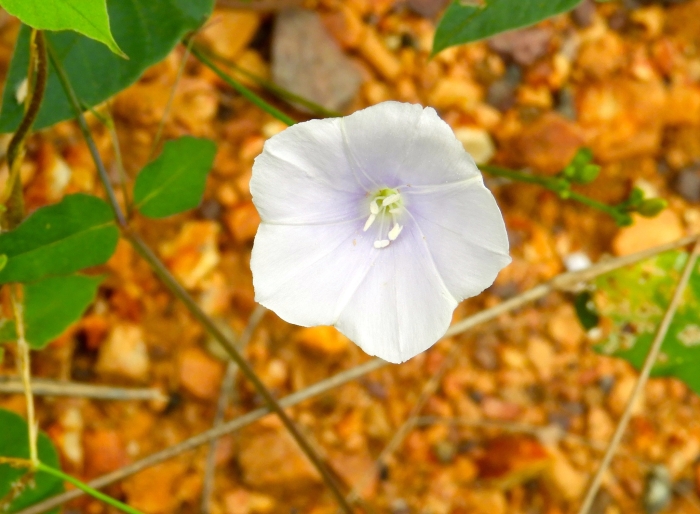Pringle’s Clustervine
(Jacquemontia pringlei)
Pringle’s Clustervine (Jacquemontia pringlei)
/
/

© Francisco Farriols Sarabia
CC BY 4.0
Image By:
© Francisco Farriols Sarabia
Recorded By:
Copyright:
CC BY 4.0
Copyright Notice:
Photo by: © Francisco Farriols Sarabia | License Type: CC BY 4.0 | License URL: http://creativecommons.org/licenses/by/4.0/ | Uploader: francisco3_ | Publisher: iNaturalist |

















Estimated Native Range
Summary
Jacquemontia pringlei, commonly known as Pringle’s Clustervine, is a semi-deciduous perennial vine native to arid and semi-arid regions, including desert scrub and rocky hillsides in the Southwestern United States and Northwest Mexico. It typically grows to a height of 3-5 feet (0.9-1.5 meters) and a width of 2-4 feet (0.6-1.2 meters). The plant features twining stems and can be trained to climb structures or left to sprawl as ground cover. Its leaves are small and green, providing a delicate texture. Pringle’s Clustervine produces tubular, purple flowers that are quite showy and attract pollinators, blooming profusely in the spring, summer, and fall.
Pringle’s Clustervine is valued for its drought tolerance and long blooming period, making it an excellent choice for xeriscaping and low-water-use gardens. It is often used to cover fences, trellises, or as a ground cover in sunny areas. This plant thrives in full sun to part shade and prefers well-drained soils. While it is low-maintenance, occasional pruning can help maintain its shape and promote denser foliage. It is not commonly affected by diseases, but overwatering can lead to root rot.CC BY-SA 4.0
Pringle’s Clustervine is valued for its drought tolerance and long blooming period, making it an excellent choice for xeriscaping and low-water-use gardens. It is often used to cover fences, trellises, or as a ground cover in sunny areas. This plant thrives in full sun to part shade and prefers well-drained soils. While it is low-maintenance, occasional pruning can help maintain its shape and promote denser foliage. It is not commonly affected by diseases, but overwatering can lead to root rot.CC BY-SA 4.0
Plant Description
- Plant Type: Vine
- Height: 3-5 feet
- Width: 2-4 feet
- Growth Rate: Moderate
- Flower Color: Purple
- Flowering Season: Spring, Summer, Fall
- Leaf Retention: Semi-Deciduous
Growth Requirements
- Sun: Full Sun, Part Shade
- Water: Low
- Drainage: Fast
Common Uses
Bee Garden, Butterfly Garden, Low Maintenance, Rock Garden
Natural Habitat
Arid and semi-arid regions, including desert scrub and rocky hillsides
Other Names
Common Names:
Scientific Names: , Jacquemontia pringlei, Jacquemontia pringlei var. glabrescens,
GBIF Accepted Name: Jacquemontia pringlei A.Gray